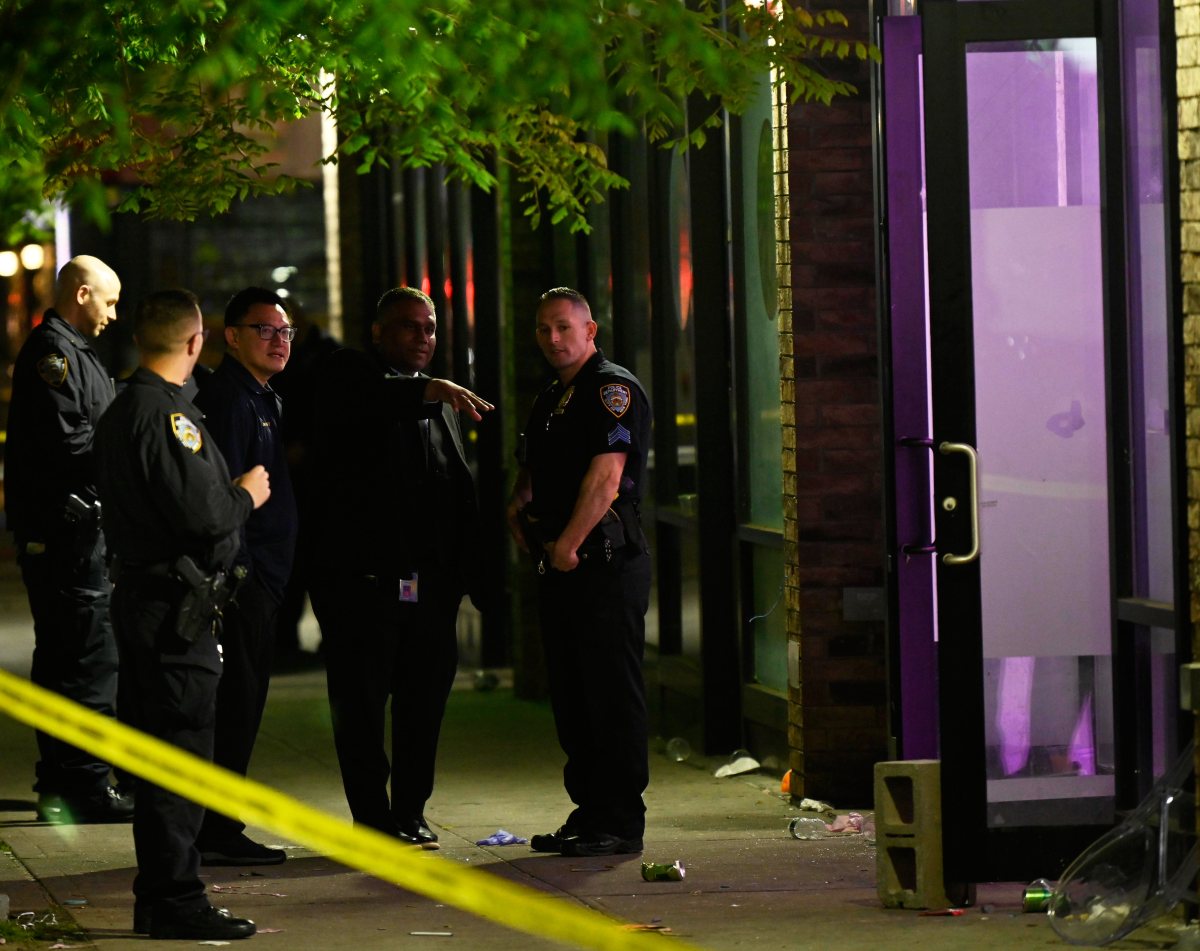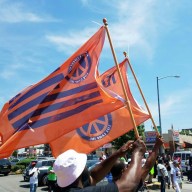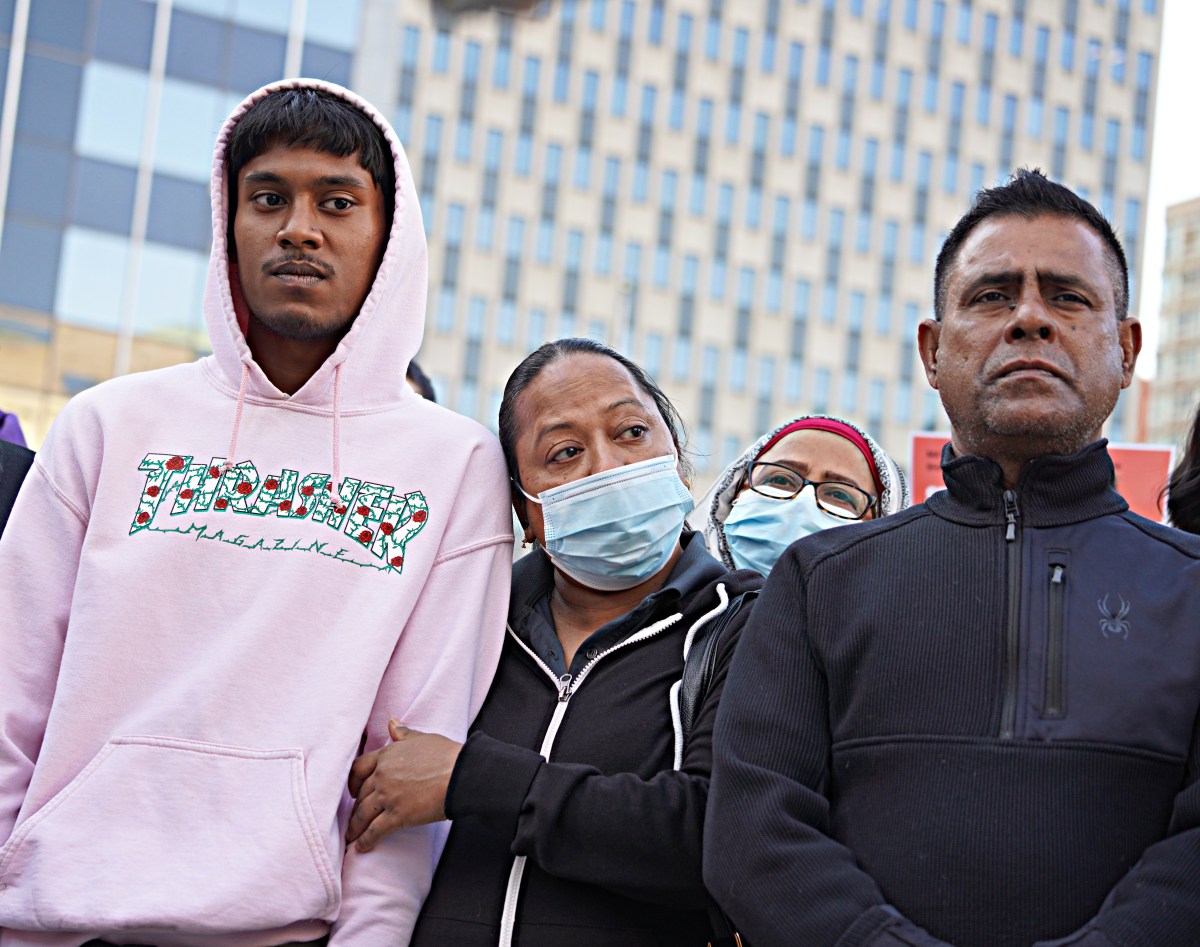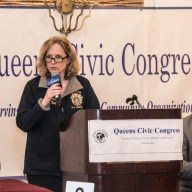By Charles Hack
Even the weakest hurricane could swamp all of Coney Island, from Sea Gate to Manhattan Beach. And in 1992 three storms converged to take out two buildings in Sea Gate, as well as sections of Steeplechase Pier on Coney Island. And if Brooklynites want to avoid a disaster on the scale of Hurricane Katrina, then they can do something about it now. That is the message from the Office of Emergency Management (OEM), at a town hall meeting held by Councilmember Domenic Recchia at P.S. 329 at 2929 W. 30th St. on Jan 31. “Tonight’s meeting was a great turnout of over 100 people all eager to help each other and make sure that what happened down in New Orleans does not happen in Coney Island or Brighton Beach,” Recchia said after the meeting. The meeting was an appeal to the community to volunteer 30 hours of their time to train to become part of a Community Emergency Response Team (CERT) that will cover Coney Island, Brighton Beach, Sea Gate and part of Bensonhurst. But the crack team would not only be ready to respond to hurricanes. They would also have the basic skills to lead the community and support emergency personnel in response to fires, terrorist attacks or any number of man-made or natural disasters. Trainees learn basic search and rescue techniques, fire safety and medical operations. “This is an opportunity to learn how to protect yourself, your family and those around you,” said Scott Caruthers, director of CERT educators “Training For Life.” Once trained, CERT members then go out and educate neighbors to prepare themselves for disasters. “Training is a balance of response and readiness,” said Sharon Hawa, New York City CERT program manager. To become certified, each member has to attend 11 weekly training sessions from 6.30 p.m. to 9.30 p.m. The training is done in collaboration with the American Red Cross, the FDNY and the NYPD. Trainees learn basic fire safety, for example, how to use a fire extinguisher on a small fire, how to do light search and rescue, and retrieve someone from a fire-damaged building. The emphasis is on “light.” “We are not trying to create a supplemental fire department,” Hawa said. Trainees also learn triage and first aid. Because local residents know best who lives in their neighborhood, the CERT team goes out to find where vulnerable people live in the community, such as seniors, the disabled and people who have limited English. The Office of Emergency Management prints a series of pamphlets, maps and brochures entitled “Ready New York” in multiple languages to help reach non-English speakers better. The OEM then relies on getting feedback, so they can get supplies, help and transport, to those who can’t or won’t make it out on their own. “We don’t want to leave anyone behind,” said Hawa. “We count on people who know where vulnerable people are.” According to the 2000 Census data, there are nearly one million seniors, non-English speakers and disabled people in the county, and southern Brooklyn has one of the highest concentrations of those in the whole of New York. The course teaches recruits how to evacuate people from a disaster area, and get people to shelters and triage centers. Trainees learn how to respond to different terrorist attacks in different urban settings, such as in malls, high-rise buildings, bridges, tunnels and subways. This includes how to evacuate the public from a subway in the event of a London-style bombing, which could result in mass casualties. “This is a very important part of this course,” said Hawa. Understanding how people respond to catastrophes can also help emergency managers assist the public to cope with the aftermath of a disaster, and improve their chances of survival. Dealing with victims who refuse to leave their homes has been incorporated into the course. Like the Army, which can help out during times of peace, CERT teams also help out between catastrophes. Charlie Barbiero, an aid to Recchia, suggested that the CERT teams could help with search and rescue if swimmers get into trouble, as has happened so many times off Coney Island beaches this last summer. They could also help track down seniors with dementia who regularly wander off from nursing homes. When a wall collapsed on the Henry Hudson Parkway in May, the local CERT team was able reach the scene within eight minutes, to get drivers to safety and divert traffic. “When the DOT arrived, they were puzzled as to why traffic wasn’t backed up further,” said Hawa. A key part of the training is to learn the command structure. Team members carry out drills, and educate the public through local civic association and other town-hall style meetings. “The aim here is not to scare people but to educate them to be better prepared and listen to warnings,” said Barbiero. “We have the largest and best police and fire in the country. And people in New York come together and help.” In fact, Barbiero said it is not hard to mobilize volunteers. Thousands turned out to help after 9/11, for example. But also CERT’s provide an organized structure with protocols, which is vital in an emergency. One of the most important messages to get out is for the public to prepare an easy-to-carry “go-bag,” with at least three days of supplies including water, food, medications/prescriptions, a first-aid kit and copies of important papers. Pet owners should prepare one for the dogs or cats, with a familiar blanket, food, water and toys for them to play with. Pets are not permitted in most shelters. Not all are happy. “I know a lot of people including yours truly who would not leave her pet behind,” said Ina Sanoff, a Brighton Beach resident. Hawa said that it is up to individuals to prepare find alternative arrangements, although after Katrina and other recent disasters, they realize that authorities have to address the problem. In addition, families should prepare a family-kit if they are going to stay at home after a disaster. These supplies should be enough to survive for three to seven days. They include whatever is in a go bag but also items such as flashlights, clothes, a radio and enough batteries to power them. Batteries can be stored in the fridge until needed, to preserve their longevity. “We would rather people don’t use candles because of fires,” said Barbiero, who also recommended having a fire extinguisher. Hawa says the goal is empower communities so they realize they have greater control over their own safety and the people around them. The meeting was just the start. Forty-four people signed up following the meeting. To date there are 31 teams in New York out of 59 Community Boards in the city. The OEM is continually expanding the program, but they need funding. Funding for the program comes through the Department of Homeland Security, Citizen Corps Grant Funding, Hawa said. “We are working to get as many teams as possible,” Hawa said. Of the 105 people who attended the meeting, 44 have signed up for team already. And civic leaders were out in force including, the clergy, nursing homes directors, business owners, people from Sea Gate housing, representatives from tenant associations and patrols, Coney Island amusement parks, the Parks Department, and homeless leaders. Other representatives wanting to find out how to pitch in, showed up from the 60th Precinct Community Council, Community Board 13, and from high-rise complexes, such as Trump Village, Grenadiers, Contello Towers, and Harway Terrace. “I think this is a very active community who want to know as much as they can about preparedness,” said Hawa. Pastor Connie Hulla for Connie Island Gospel Assembly wanted to know how the church could help. Herman Schaffer, community outreach disaster education coordinator from the OEM said that the best way to help is to pass on the word to their congregations. Barbiero, a former community affairs officer with the 60th Precinct, plans to eventually create two more CERTS, one in Brighton Beach and the other in Sea Gate. Recchia said that he is working with State Senator Diane J. Savino, Assemblymember Adele Cohen, and Rep. Jerrold Nadler to raise awareness and funding. The training program for one CERT costs between $10,000 and $15,000, including overtime salaries for the NYPD and FDNY trainers. Funding will also be needed to maintain the team in the long term. And for many, being prepared is the difference between life and death. Recchia said that it is important that those who do not own cars are not left behind, as happened in New Orleans. “If we don’t volunteer and work together, our brothers and sisters and friends up in the high rises won’t get out,” Recchia said. “I want everyone to realize what we are faced with.” For more information contact coordinator Barbiero at (718) 373-9673 at Recchia’s office. To contact CERT at OEM call (718)422-8935 or visit www.nyc.gov/cert.



























